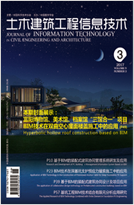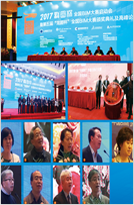2015, 7(1): 60-64.
基于Affordance的建筑设计知识建模方法研究
上海交通大学基建处,上海 200240 |
An Affordance-based Approach for Architectural Design Knowledge Modeling
The Office of Campus Construction of Shanghai Jiaotong University, Shanghai 200240, China |
引用本文:
张晓霓. 基于Affordance的建筑设计知识建模方法研究[J]. 土木建筑工程信息技术,
2015, 7(1): 60-64.

Citation:
Zhang Xiaoni. An Affordance-based Approach for Architectural Design Knowledge Modeling[J]. Journal of Information Technologyin Civil Engineering and Architecture,
2015, 7(1): 60-64.

摘要:在建筑设计中,设计人员通常需要考虑来自全生命周期的各种因素。由于这些因素通常是隐藏在最终详细设计结果(建筑设计图纸等)背后,这给建筑设计知识的重用带来了较大的困难。本文提出了基于设计方法学中的新概念—Affordance,来解决建筑设计中隐性设计知识的建模与应用问题。首先,本文将探索建筑设计中的Affordance概念,将目前主要用于概念设计的Affordance概念应用于建筑设计的详细设计阶段;接着,将提出基于形状-行为-Affordance(Form-Behavior-Affordance,FBA)信息模型,使得设计人员可以对设计结果的全生命周期内所需要考虑的各种隐性因素进行建模;然后,将借助于遗传编程(Genetic-Programming)技术对建筑设计知识进行建模;最后,通过某教学楼扩建案例来展示本文提出方法的可行性。
Abstract: In architectural design, designers often need to consider a variety of factors in the full life cycle. As these factors are usually hidden in the final results of the detailed design (architectural design drawings, etc.), it brings greater difficulties for the reuse of the architectural design knowledge. This paper presents a new concept "Affordance" based on the design methodology to solve the problem in modeling and application of the tacit design knowledge in architectural design. Firstly, this paper will explore the concept "Affordance"which is mainly used in the conceptual design at present and aplly to the detailed design stage of architectural design. Secondly, the information model based on Form-Behavior-Affordance (FBA) is built so that designers can model the whole hidden factors in the final results of the full life cycle. Thirdly, the Genetic-Programming technology is used to model the architectural knowledge. At last, a case of expanding a school building is used to present the feasibility of the method proposed in this article.
| [1] |
Demian, P. and R. Fruchter. An ethnographic study of design knowledge reuse in the architecture, engineering, and construction industry. Research in Engineering Design, 2006. 16(4):184-195.doi: 10.1007/s00163-006-0010-x |
| [2] |
Busby, J.S. The Problem with Design Reuse: An Investigation into Outcomes and Antecedents. Journal of Engineering Design, 1999. 10(3): 277-296.doi: 10.1080/095448299261335 |
| [3] |
周榕.知识经济时代建筑师角色解放与价值回归.建筑学报, 2000(01): 53-55+71.doi: 10.3969/j.issn.0529-1399.2000.01.013 |
| [4] | |
| [5] |
李湘桔. 基于知识管理的建筑设计企业项目管理研究. 2009, 天津大学. |
| [6] |
张哲颖. 大型建筑企业知识管理应用研究. 2012, 山东大学. |
| [7] |
Gibson, J. The concept of affordances. Perceiving, acting, and knowing, 1977: 67-82. |
| [8] |
Norman, D.A. Affordance, conventions, and design. interactions, 1999. 6(3): 38-43.doi: 10.1145/301153.301168 |
| [9] |
Maier, J.R.A., G.M. Fadel, and D.G. Battisto. An affordance-based approach to architectural theory, design, and practice. Design Studies, 2009. 30(4): 393-414.doi: 10.1016/j.destud.2009.01.002 |
| [10] |
Bunge, M. Treatise on basic philosophy: Ontology I: the furniture of the world. Vol. 1. 1977: Springer. |
计量
- PDF下载量(14)
- 文章访问量(1400)
- HTML全文浏览量(1078)















